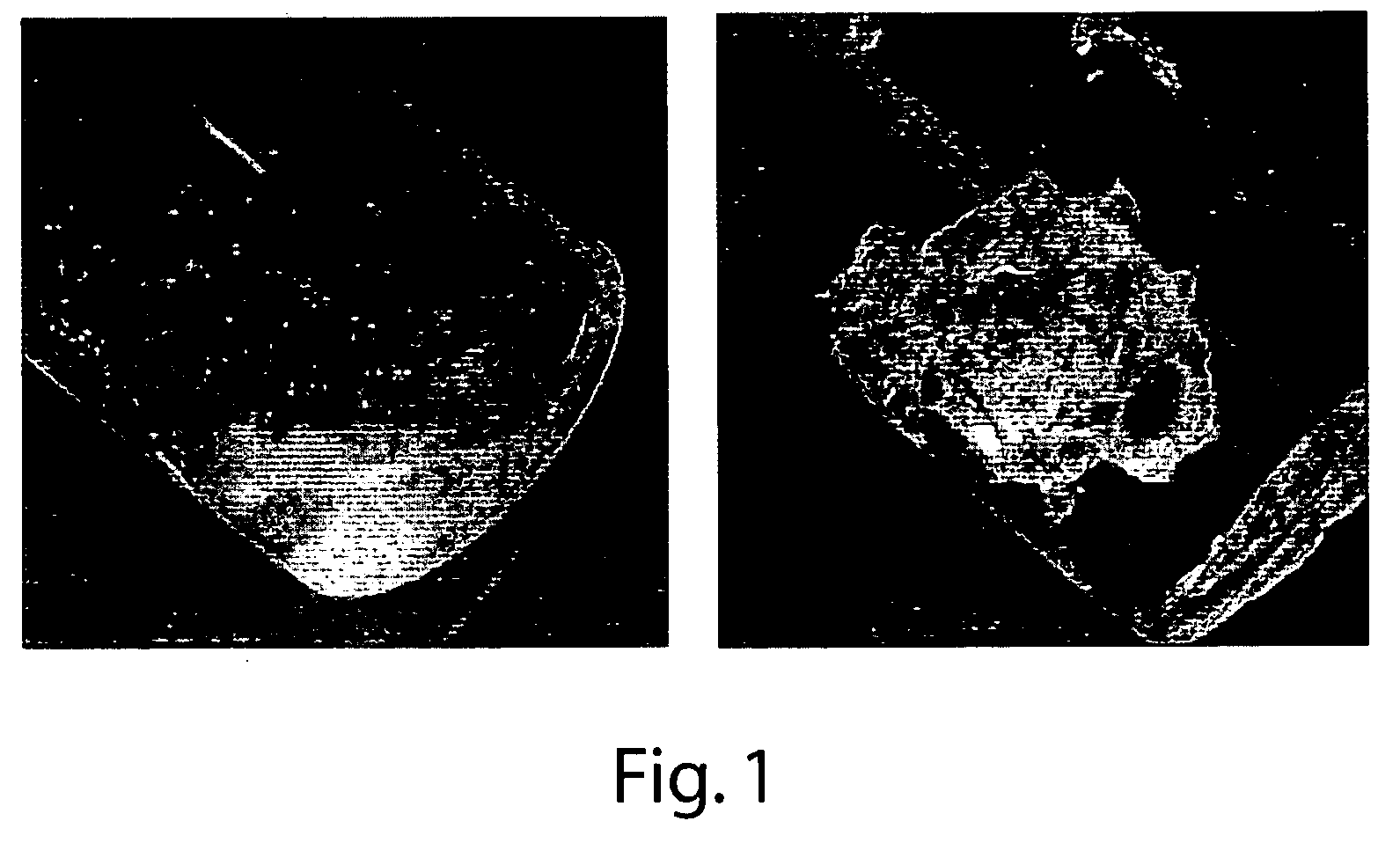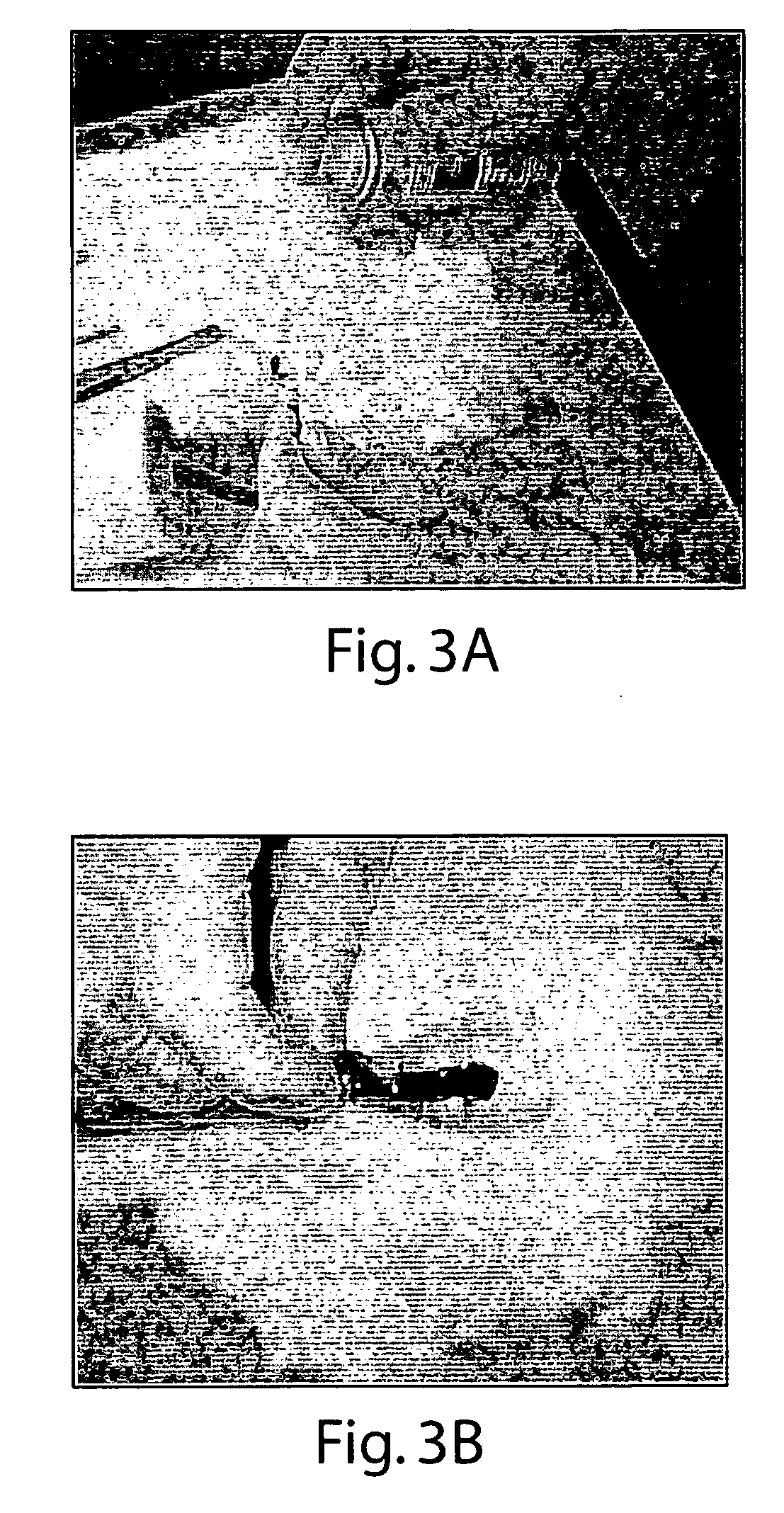Agents for controlling biological fluids and methods of use thereof
a biological fluid and agent technology, applied in the direction of biocide, catheter, bandage, etc., can solve the problems of limited efficacy, poor cost effectiveness, and increased risk of adverse immune responses of patients, so as to promote hemostasis, prevent adhesion, and promote wound healing
- Summary
- Abstract
- Description
- Claims
- Application Information
AI Technical Summary
Benefits of technology
Problems solved by technology
Method used
Image
Examples
example 27
An Absorbent Article
[0132] In an embodiment there is provided an absorbent layer comprising a liquid-impermeable and moisture vapor-permeable outer layer having an inner surface and an outer surface, the inner surface essentially coextensive with an outer surface of the absorbent layer. The liquid-permeable liner may have a surface that is substantially coextensive with an inner surface of the absorbent layer such that the absorbent layer is located between the liquid-permeable sheet and the outer layer. In addition, the article has a biocompatible biodegradable hydrophobic composition on at least a portion of a surface of the liquid-permeable liner opposite that which is coextensive with the inner surface of the outer layer, wherein the composition comprises from about 50% to 99% by weight liquid-crystal forming compound and about 0% to 50% by weight solvent. When the absorbent device is used as a wound dressing, it can be positioned over the wound with the absorbent layer positio...
example 28
Hemostasis of Liver Lacerations in a Murine Model
[0137] Animal #1—an adult rodent was anesthetized, and then the tail was completely lacerated to produce a robust arterial bleed into 37° C. saline. After two minutes without slowing or cessation, tail was removed from saline and one drop of Formulation #2 was applied. Bleeding stopped, the after ˜1 min, slow oozing started. This secondary bleeding was completely stopped with the second application.
[0138] Animal #2—Tail bleed was induced as in animal #1. After 10 sec in 37° C. saline the robustly bleeding tail was removed from saline and coated with a drop of Formulation #2. This greatly slowed the bleed with some breakthrough from arterial pressure. A second and third drop of Formulation #2 largely, but did not completely control, the bleed. A transverse laparotomy was performed to expose abdominal cavity. In the process of exposing the liver, a bleed occurred from an unintended wound of a major vessel (unidentified). The bleeding ...
example 29
Hemostasis of Liver Lacerations in a Murine Model
[0141] Eight male Sprague-Dawley rats (400-450 g) were anesthetized using ketamine 90 mg / kg and xylazine 10 mg / kg i.p. Following induction of anesthesia, a laparotomy was performed exposing the liver. Dissections of the median lobe were preformed first removing approximately 25% of the lobe mass followed by treatment and a second injury representing a mid-lobe transaction removing approximately 50% of the lobe mass. Application of the formulation provided in Example 2 applied by irrigation and positive pressure spray techniques were able to control the hemorrhage in all animals (n=8) within 20 seconds (range 10-45 sec) compared with control animals that exsanguinated from the model injuries within 5-10 minutes. The control of hemorrhage was confirmed for a period of 30 minutes and the animals were subsequently euthanized.
PUM
| Property | Measurement | Unit |
|---|---|---|
| viscosity | aaaaa | aaaaa |
| viscosity | aaaaa | aaaaa |
| viscosity | aaaaa | aaaaa |
Abstract
Description
Claims
Application Information
 Login to View More
Login to View More - R&D
- Intellectual Property
- Life Sciences
- Materials
- Tech Scout
- Unparalleled Data Quality
- Higher Quality Content
- 60% Fewer Hallucinations
Browse by: Latest US Patents, China's latest patents, Technical Efficacy Thesaurus, Application Domain, Technology Topic, Popular Technical Reports.
© 2025 PatSnap. All rights reserved.Legal|Privacy policy|Modern Slavery Act Transparency Statement|Sitemap|About US| Contact US: help@patsnap.com



